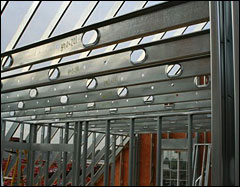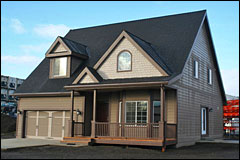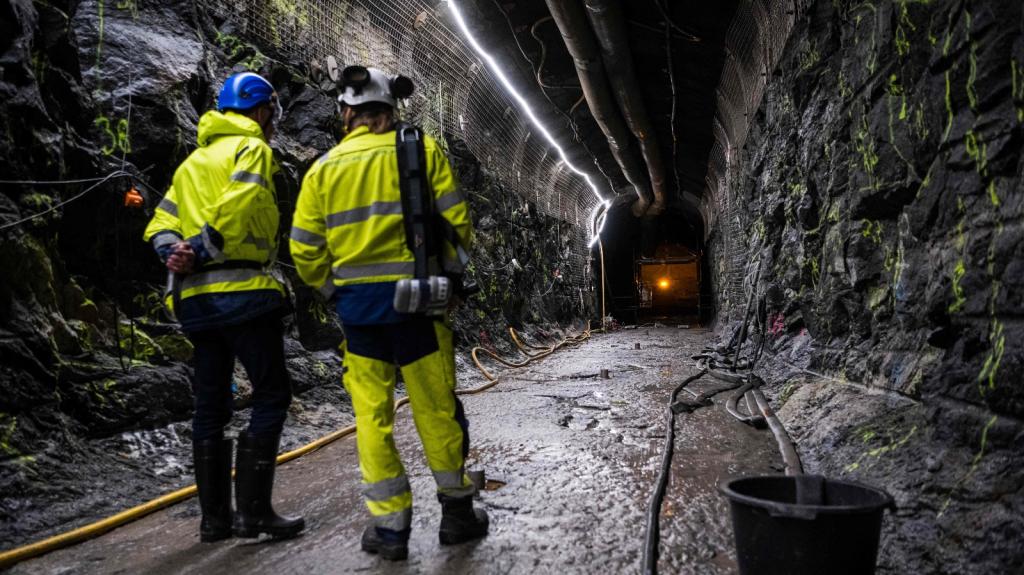Guess what will save the economy and the environment? Buying a new car!

OK, maybe not save — but according to the folks at Oregon-based Miranda Homes, it can help. The automobile industry has lost some half a million jobs and $50 billion in revenue while we hang on to our old jalopies. Miranda owner Rob Boydstun knows that cars hold great potential when reincarnated, and their waste products — let’s call that stuff carbage — can be transformed into cleaner, greener, and cheaper houses, coming soon-ish to a subdivision near you.
Salvage is nothing new in the building industry. The deconstruction business — dismantling houses to reuse their parts, from timber framing to copper wire — is still healthy, and there are plenty of creative recyclers using tires, bottles, cans and even picture-frame corners to help build homes. But Miranda houses are made of steel: recycled steel crafted of junked car parts, to be specific.
Which means, says Boydstun, you don’t need to feel guilty about trading in your old car for a new one (especially if the new one has better mileage and lower emissions), and you should encourage your neighbors with car-carcasses rotting in the backyard to get them to a scrap heap. He says the automobile is recycled more than any other consumer product on the market. Per the Clean Air Foundation, it takes less than a minute to implode a whole car into a fistful of metal.
Boydstun’s not exactly an objective observer when it comes to cars, having spent the last 19 years at the helm of a commercial car carrier manufacturer. That business has suffered, understandably, as his own customers surf their economic tsunami; he’s laid off some 400 workers. And he sometimes sounds more like a car salesman than a builder when talking up his homes. But the car parts, he says, are the least important aspect of Miranda creations. “The foundation is more impressive than the steel,” he says. “It’s really about the holistic approach.”

Remaining on Boydstun’s staff is a team of engineers who have honed that holistic approach to create super-insulated, panelized housing of recycled materials that costs little to buy or to keep up. It’s a kind of pre-fab, where most of the house is assembled in a plant and snapped together on site. They were inspired by the manufacturing philosophy of a former client, known as the Toyota Production System. It’s a kind of advanced version of Henry Ford’s assembly line mixed with on-demand technology: create product based on what customers want, when they want it, rather than flooding the market with supply.
Miranda homes, which have been in the laboratory stage for the last two years, resulting in just a single model house, now has two customers: a subdivision-to-be in suburban Portland, Ore., and a development on the coast called Wilder, in Newport, Ore. Between them, they’ll have at least 50 Miranda homes, which should sell for around $95 per square foot and maintain a yearly utility bill in the $800 range.
On the design side, the homes pass for traditional suburban aesthetic, a cottage with an attached garage in the front. The recycled steel is both mold- and rot-resistant, and not prone to termites, of course.
Not everything is economically and environmentally friendly about a Miranda house. They are almost too efficient, requiring only five workers to build, as opposed to the 15 or so workers usually involved in a house’s construction. And let’s be honest, buying a new car purely for the sake of turning the old one into housing stock may not be the best environmental bargain. Still, Boydstun points out that you can, after all, get a heck of a good deal at your local dealership right now. “Let’s get those old cars off the road,” he says. “Right now’s a great time to buy a car.”



